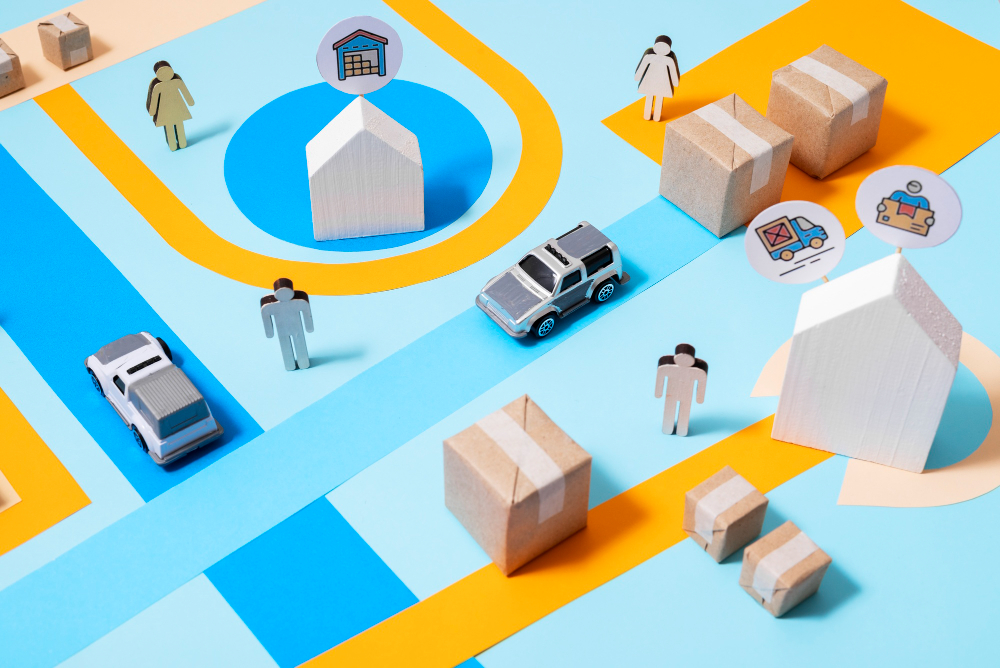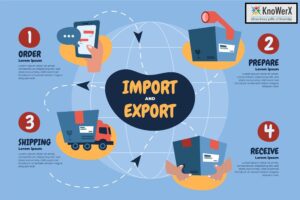Learn the Understanding of Supply Chain Transformation
Supply Chain Transformation is no longer a choice it is a necessity for organizations that aim to remain competitive in today’s fast-evolving global economy. Businesses that embrace transformation in their supply chains gain agility, efficiency, and resilience, while those that ignore it risk being left behind.

At KnoWerX, we believe that learning the understanding of Supply Chain Transformation is the first step toward building smarter, more responsive systems. Below are some practical tips to help professionals and organizations grasp and implement this change effectively.
What is Supply Chain Transformation?
Start with the definition.
Supply Chain Transformation refers to the fundamental rethinking and redesign of supply chain processes, structures, and technologies to achieve better performance and customer satisfaction. It is not just about incremental improvements it is about shifting the way businesses operate in alignment with modern challenges such as digitalization, sustainability, and globalization.
Key Drivers of Supply Chain Transformation
Identify what drives the need for change.
Several forces push organizations toward transformation:
- Digital Technology: Artificial Intelligence, IoT, blockchain, and automation are reshaping supply chains.
- Customer Expectations: Rising demand for faster delivery and personalization requires new supply chain models.
- Global Disruptions: Events like pandemics, trade wars, and geopolitical changes force organizations to adapt.
- Sustainability Goals: Companies must meet stricter environmental regulations and consumer expectations for green practices.
Understanding these drivers will help you stay proactive rather than reactive.
Core Elements of Transformation
Focus on the pillars.
Successful Supply Chain Transformation relies on these key elements:
- Process Redesign: Streamlining operations for efficiency and cost-effectiveness.
- Technology Adoption: Leveraging advanced tools for visibility and automation.
- Talent Development: Building skills among professionals to manage modern supply chains.
- Collaboration & Integration: Enhancing coordination among stakeholders.
- Data-Driven Decisions: Using analytics for forecasting, demand planning, and risk management.
Steps to Achieve Transformation
Break it down into actionable steps.
- Assess Current State: Analyze existing processes, strengths, and weaknesses.
- Define Clear Goals: Align supply chain objectives with overall business strategy.
- Leverage Technology: Invest in tools like ERP, AI, and predictive analytics.
- Upskill Workforce: Train professionals through industry-recognized certifications and programs (like those offered by KnoWerX).
- Implement Change Gradually: Avoid overwhelming the system start small and scale.
- Measure & Optimize: Use KPIs to track progress and refine strategies.
Benefits of Supply Chain Transformation
Highlight the advantages.
- Increased Efficiency: Optimized workflows reduce costs and save time.
- Agility & Resilience: Ability to adapt quickly to disruptions.
- Enhanced Customer Experience: Faster, more reliable deliveries.
- Sustainability: Environmentally responsible practices build brand reputation.
- Competitive Edge: Transformed supply chains become strategic differentiators.
Challenges to Overcome
Be prepared for obstacles.
While transformation offers immense benefits, it is not without hurdles:
- Resistance to Change: Employees and stakeholders may be reluctant.
- High Costs: Investments in technology and training can be significant.
- Data Silos: Lack of integration between systems hampers visibility.
- Uncertainty: Market volatility makes long-term planning complex.
The best way to overcome these challenges is through continuous learning, effective leadership, and expert guidance, areas where KnoWerX can play a crucial role.
Future of Supply Chain Transformation
Keep an eye on what’s next.
The future of Supply Chain Transformation will be shaped by:
- End-to-End Digital Integration: Fully connected ecosystems powered by real-time data.
- AI & Predictive Analytics: Smarter forecasting and risk management.
- Sustainable Supply Chains: Greater emphasis on circular economy practices.
- Hyper-Personalization: Tailoring supply chains to individual customer needs.
- Collaborative Networks: Shared platforms across industries to boost resilience.
Professionals who stay updated and skilled in these areas will remain ahead in their careers.
Frequently Asked Questions
What does Supply Chain Transformation mean in simple terms?
Supply Chain Transformation is the process of fundamentally redesigning and modernizing supply chain operations using advanced technologies, new processes, and innovative strategies to achieve efficiency, resilience, and customer satisfaction.
Why is Supply Chain Transformation important today?
In today’s global economy, customer expectations, digital disruption, sustainability goals, and frequent market uncertainties make transformation essential. Without it, businesses risk inefficiency, higher costs, and losing their competitive edge.
What are the key technologies driving Supply Chain Transformation?
Some of the leading technologies include:
Artificial Intelligence (AI) & Machine Learning
Internet of Things (IoT)
Blockchain
Robotic Process Automation (RPA)
ERP & Predictive Analytics tools
KnoWerX: Your Partner in Supply Chain Transformation

At KnoWerX, we understand that mastering Supply Chain Transformation requires more than just knowledge it requires the right mindset, tools, and training. With over 33 years of collective experience and 26+ years in education and consultancy, we provide professionals with the expertise to navigate this journey. Through our globally recognized certifications, training programs, and consultancy services, we empower supply chain professionals to adapt, innovate, and excel in an ever-changing business landscape.
If you are ready to learn the understanding of Supply Chain Transformation, KnoWerX is your one-stop destination for knowledge, skills, and growth.
Image Reference: Freepik
Disclaimer: All trademarks, logos, and brand names are the property of their respective owners. All company, product, and service names used in this website are for identification purposes only. Use of these names, trademarks, and brands does not imply endorsement.



